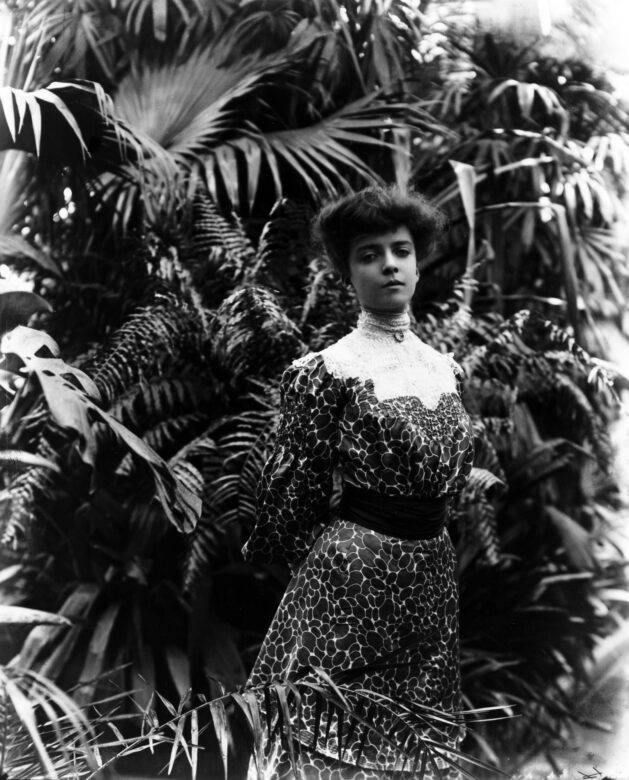State Dining Room
The State Dining Room, which now seats as many as 140 guests, was originally much smaller and served at various times...
Main Content

The old kitchen in the White House basement, c. 1891.
Library of Congress
President William McKinley in his office, 1898.
Library of Congress
Mrs. Russell (Mary) Harrison with her daughter Marthena and nephew Benjamin Harrison McKee. ca. 1889. In his great affection for his family, President Benjamin Harrison insisted that his children, in-laws, and grandchildren live with him at the White House.
Library of Congress
Alice Roosevelt in the White House conservatory, 1902.
Library of Congress
The north entrance to the White House about 1893 with a stained glass fanlight by Louis Comfort Tiffany.
Library of Congress
Quentin and Kermit Roosevelt with the White House police, 1902.
Library of Congress
Quentin Roosevelt and his playmate Roswell Newcomb Pinckney, 1902.
Library of Congress
Temporary war room on the second floor of the White House during the Spanish-American war, c. 1898.
Library of CongressAbout this Gallery
Frances Benjamin Johnston (1864-1962) was an early photojournalist and a noted freelance photographer. Johnston's documentary work was exemplary and included a renowned series of photographs commissioned by Booker T. Washington for the Hampton Institute in 1899 and the Tuskegee Institute in 1906.
She also made her mark as portrait photographer. From the late 1880s to the 1910s, Johnston captured remarkable images of the White House that document the lifestyles of the first families, workers, and visitors as well as its architectural design in that period. Johnston studied art in Paris and Washington and through family connections met the elite of Washington society and gained access to the first family. With this opportunity and hard work, Johnston established a business as a professional portrait photographer and moved into the field of photojournalism, working freelance for numerous magazines and illustrated journals.
In the early 1910s, Johnston began to specialize in architectural photography. The culmination of her career as an architectural photographer came with the Carnegie Corporation's support of a survey of the early buildings and estates of nine southern states. The Library of Congress holds her papers and the bulk of her photographs.
The State Dining Room, which now seats as many as 140 guests, was originally much smaller and served at various times...
James Hoban, the original architect of the President's House, intended that the space now called the "Green Room" be used...
Theodore Roosevelt became president after the assassination of President William McKinley in 1901. The early months of his administration were a...
Oscar De Priest’s election to Congress as a Republican representative from Chicago in 1928 created an interesting political and social di...
Civil Rights activist and journalist William Monroe Trotter caused a stir in 1914 because he strongly protested President Woodrow Wilson’s su...
To imagine what it was like here when the White House was being constructed in the 1790s, erase everything else...
In 1878, Easter Monday celebrants who were not allowed to roll eggs on the grounds of the U.S. Capitol headed...
The first known image of the White House was a daguerreotype taken in 1846, during the administration of President James K....
Ida B. Wells-Barnett was an American investigative journalist, educator, and activist in the late nineteenth and early twentieth centuries.1 An...
Curators are indispensable to historic sites and museums today. Utilizing their subject expertise and training in the field, they conduct...
During the Civil War, the fighting at times came so close to the capital that the Lincolns could hear the...
The Green Room, positioned between the East Room and the Blue Room, is one of the principal parlors of the...